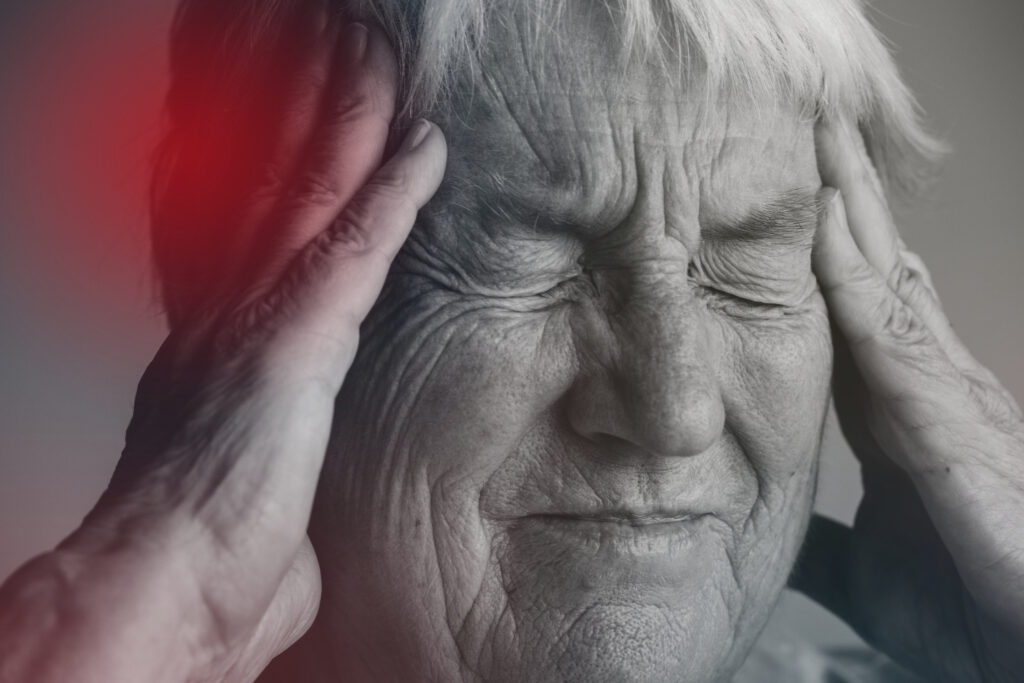When it comes to managing chronic pain, you might feel overwhelmed by the myriad of options available, but there are trustworthy techniques worth considering. Mindfulness practices, exercise, and nutritional strategies can all play vital roles in easing discomfort. Each method offers unique benefits, yet it's the combination that often leads to the best results. As you explore these approaches, you may find that some resonate more than others. What's essential is understanding how to tailor these techniques to your needs, and the journey to discover what truly works for you is just beginning.
Mindfulness and Meditation
When you're dealing with chronic pain, mindfulness and meditation can be powerful tools to help manage your discomfort. These practices encourage you to focus on the present moment, allowing you to observe your pain without judgment. Rather than resisting or fearing your sensations, you can learn to accept them, which often reduces their intensity.
To get started, find a quiet space where you can sit comfortably. Close your eyes and take a few deep breaths, letting your body relax with each exhalation. As thoughts arise, acknowledge them without getting caught up in them. Gently guide your focus back to your breath. This simple act of returning to your breath can create a sense of calm amidst the chaos of pain.
Incorporating mindfulness into your daily routine can also help. Practice being fully present during everyday activities, whether it's eating, walking, or even washing dishes. Notice the sensations, smells, and sounds around you. This practice can shift your attention away from pain and help you cultivate a more balanced perspective.
Meditation apps or guided sessions can provide support and structure, making it easier for you to establish a regular practice. Even just a few minutes a day can lead to significant changes over time.
Physical Therapy Approaches
Physical therapy approaches can considerably alleviate chronic pain and improve your overall function. By working with a licensed physical therapist, you'll gain access to tailored exercises designed to strengthen the muscles around painful areas, which can lead to reduced stress on your joints and tissues. This targeted approach not only helps in managing pain but also enhances your mobility.
One common technique you might encounter is manual therapy. This hands-on method involves the therapist manipulating your muscles and joints to relieve tension and improve circulation. You'll find that it can result in immediate relief and a better range of motion.
Additionally, modalities like ultrasound and electrical stimulation may be utilized to aid in pain reduction and tissue healing.
You'll also benefit from education on proper body mechanics. Learning how to move correctly can prevent further injury and reduce pain flare-ups. Your therapist will guide you through activities of daily living, ensuring you maintain a functional lifestyle while minimizing discomfort.
Consistency is key. Attending regular sessions and adhering to home exercise recommendations will enhance your results. You'll discover that over time, these strategies can lead to significant improvements in both your physical well-being and your mental outlook.
Incorporating physical therapy into your chronic pain management plan can empower you to take control of your pain, facilitating a more active and fulfilling life. With the right approach, you can reclaim your daily activities and improve your quality of life.
Nutritional Strategies
When managing chronic pain, your diet plays an essential role. Incorporating anti-inflammatory foods can help reduce discomfort, while staying properly hydrated supports overall health.
Let's explore how these nutritional strategies can make a difference in your pain management journey.
Anti-inflammatory Foods
Incorporating anti-inflammatory foods into your diet can greatly impact your chronic pain management. These foods help reduce inflammation in your body, which is often a significant contributor to pain. Focus on including fruits and vegetables, especially those rich in antioxidants, like berries, spinach, and kale. These nutrients combat oxidative stress and support your overall health.
Don't forget healthy fats! Incorporate sources like olive oil, avocados, and fatty fish such as salmon and mackerel. Omega-3 fatty acids found in these foods have proven anti-inflammatory properties and can help ease joint pain.
Whole grains, like brown rice and quinoa, also play an essential role. They provide vital nutrients and fiber, promoting digestive health and reducing inflammation.
You should also consider spices like turmeric and ginger, both of which have strong anti-inflammatory effects.
Lastly, limit processed foods, refined sugars, and trans fats, as they can exacerbate inflammation and pain. By choosing a balanced diet rich in anti-inflammatory foods, you'll not only help manage your chronic pain but also boost your overall well-being. Your body will thank you for it!
Hydration Importance
Staying well-hydrated is just as important as choosing the right foods for managing chronic pain. Proper hydration helps your body function at its best, supporting everything from digestion to circulation. When you're dehydrated, your body can become more sensitive to pain, exacerbating your discomfort.
Drinking enough water can help reduce inflammation, support joint lubrication, and even improve your mood, all of which can contribute to pain relief.
You should aim for at least eight 8-ounce glasses of water a day, but individual needs may vary depending on activity level and climate. Keep a water bottle handy to remind yourself to sip throughout the day.
In addition to plain water, consider incorporating hydrating foods into your diet, such as fruits and vegetables. Items like cucumbers, watermelon, and oranges can greatly boost your fluid intake.
Pay attention to your body's signals, too. If you feel thirsty, it's already a sign that you need more hydration.
Make hydration a priority in your routine, and you might notice a positive shift in how you feel. Remember, every small change can make a big difference in managing chronic pain effectively.
Alternative Therapies
Alternative therapies offer a holistic approach to managing chronic pain, focusing on the mind-body connection and natural healing methods. By exploring these options, you can find relief that resonates with your personal beliefs and lifestyle.
Techniques such as acupuncture, for instance, involve inserting thin needles into specific points on your body. Many find it helps reduce pain by stimulating the nervous system and promoting blood flow.
Another option is mindfulness meditation, where you train your mind to focus on the present moment. This practice can notably lower stress and anxiety, which often exacerbate chronic pain. By integrating mindfulness into your daily routine, you can cultivate a sense of calm and improve your overall well-being.
Herbal remedies also play an essential role in alternative therapies. Ingredients like turmeric and ginger possess anti-inflammatory properties that may alleviate pain. You might consider incorporating these herbs into your meals or taking them as supplements, but always consult with a healthcare professional before starting any new regimen.
Additionally, therapeutic massage can help relieve muscle tension and improve circulation, providing a soothing escape from chronic pain. Finding a skilled massage therapist can enhance your experience and lead to lasting benefits.
Lastly, consider exploring aromatherapy, which uses essential oils to promote relaxation and well-being. Scents like lavender and peppermint can create a calming environment and help shift your focus away from pain.
Engaging in these alternative therapies can empower you in your journey toward managing chronic pain effectively.
Exercise and Movement
Regular activity can play an essential role in managing chronic pain, helping you regain strength and flexibility.
You don't need to engage in high-impact workouts; low-impact exercises can also provide significant benefits.
Let's explore some effective options that can fit easily into your routine.
Benefits of Regular Activity
Engaging in regular activity can greatly alleviate chronic pain and enhance your overall quality of life. When you incorporate movement into your daily routine, you stimulate the release of endorphins, which are natural painkillers that boost your mood and reduce discomfort. This not only helps you feel better physically but also encourages a more positive outlook.
Additionally, regular activity improves your strength and flexibility, which can lead to better posture and reduced strain on your body. As you strengthen your muscles, they support your joints more effectively, minimizing the risk of injury and chronic pain flare-ups.
You'll also find that consistent movement can enhance circulation, leading to improved oxygen and nutrient delivery throughout your body.
Moreover, engaging in physical activity can help you maintain a healthy weight, reducing the pressure on your joints and spine. This is particularly important for individuals suffering from conditions like arthritis.
Finally, regular activity can improve your sleep quality, allowing your body to recover and rejuvenate, which is essential for managing chronic pain. By making movement a priority, you're investing in your long-term health and well-being.
Low-Impact Exercise Options
If you're looking for ways to stay active without putting too much strain on your body, low-impact exercises are a fantastic option. These activities help improve your strength, flexibility, and endurance while minimizing the risk of injury.
You might consider swimming or water aerobics, which provide resistance and support, making movements easier on your joints.
Walking is another excellent choice. It's simple, can be done anywhere, and you can adjust the pace to suit your comfort level.
Yoga and tai chi focus on gentle movements and stretching, helping to build balance and flexibility while promoting relaxation.
Cycling, whether on a stationary bike or outdoors, offers a great cardiovascular workout without harsh impact on your knees and hips.
Remember to start slow and listen to your body; you can gradually increase intensity as you gain confidence and strength.
Incorporating these low-impact exercises into your routine can help alleviate chronic pain by improving circulation and reducing stiffness.
Pain Management Techniques
Managing chronic pain effectively requires a combination of techniques tailored to your individual needs. It's crucial to explore various approaches and find what works best for you. One effective technique is medication management. Over-the-counter pain relievers like ibuprofen or acetaminophen can provide temporary relief, but don't hesitate to consult your doctor about prescription options if you need something stronger.
Another technique involves physical therapy. A trained therapist can guide you through specific exercises that strengthen muscles and improve flexibility, which can greatly reduce pain over time.
Additionally, incorporating mindfulness practices such as meditation or deep breathing can help you manage pain by reducing stress and enhancing your overall well-being.
Cognitive-behavioral therapy (CBT) is another valuable tool. It focuses on changing the way you perceive pain and can help you develop coping strategies to handle it better. Many people find that combining CBT with other techniques amplifies the benefits.
Alternative therapies, like acupuncture or massage, can also play a role in pain management. These methods often promote relaxation and improve blood flow, which may alleviate discomfort.
Finally, consider maintaining a pain journal. Tracking your pain levels, activities, and emotional states can provide insights into triggers and effective interventions, leading to more informed choices in your pain management journey.
Incorporating these techniques can empower you to take control of your chronic pain, enhancing your quality of life and helping you engage more fully in daily activities.
Support and Community Resources
Finding support and community resources can considerably enhance your journey in managing chronic pain. You don't have to face this challenge alone; connecting with others who understand your experiences can provide both comfort and encouragement.
Start by exploring local support groups or online forums. These spaces allow you to share your thoughts, learn from others, and discover new coping strategies.
Consider seeking professional help from counselors or therapists specializing in chronic pain management. They can help you navigate your emotions and develop personalized coping mechanisms. Many organizations offer resources tailored to specific conditions, so look for those that resonate with your situation.
Joining physical activity classes designed for individuals with chronic pain can also be beneficial. Many community centers or local gyms have programs that focus on gentle exercise, which can improve your overall well-being.
Additionally, check for workshops or seminars on pain management techniques hosted by healthcare professionals.
Don't forget about social media platforms. They can connect you with a broader community of people facing similar challenges. Engaging in these spaces can provide valuable insights and a sense of belonging.
Finally, local hospitals or clinics often have resource lists that include support groups, wellness programs, and educational sessions. Reach out to them to find what's available in your area.
Conclusion
Incorporating these techniques into your daily routine can make a significant difference in managing chronic pain. By embracing mindfulness, staying active, and focusing on nutrition, you can enhance your overall well-being. Explore alternative therapies and engage with support communities to find what works best for you. Remember, pain management is a personal journey, and combining these approaches will empower you to take control of your pain and improve your quality of life.



